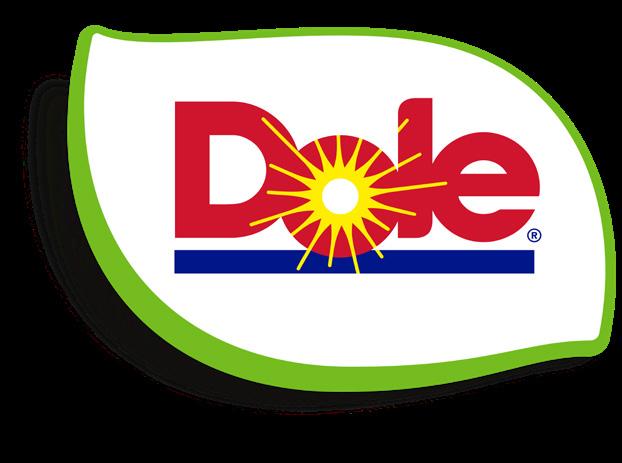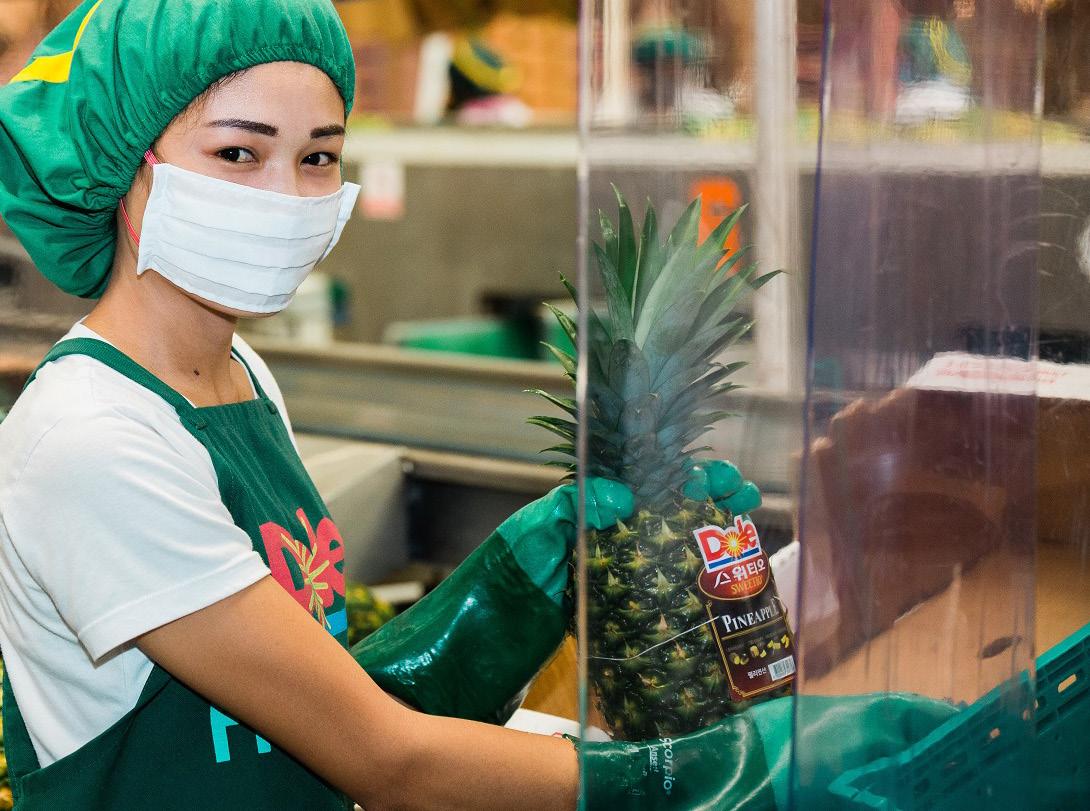




Empowering consumers to eat healthier and live better
Dimitri Fleitman, Head of Supply Chain at Dole Foods of Canada on embedding social responsibility and new technology into the supply chain.
With over 120 years of history, Dole Foods of Canada and its affiliated companies have established themselves as global leaders in delivering high-quality packaged fruits, juices and snacks, supplying 75 countries with over 300 products.
riven by consumer desire for wholesome food options that deliver on taste, Dole is on a never-ending pursuit of new innovations across every category, such as snacking, beverages, ingredients and frozen treats. The company has become a world leader in growing, sourcing, distributing, and marketing fruit products and wholesome foods, offering a full line of packaged shelfstable fruit, beverages, frozen goods & novelties, as well as snacks.
Joining us from Dole Foods of Canada is Dimitri Fleitman, Head of Supply Chain, to discuss how the company’s goal to provide a positive impact on “people, planet and prosperity” has led to a more robust global supply chain.
In his role, Dimitri focuses on ensuring the efficiency and effectiveness of the company’s global supply chain operations and its deliverables towards the Canadian Marketplace, through the development of its comprehensive ‘Farm to Shelf’ supply chain strategy, managing the transportation and distribution of goods, cultivating partnerships within the supply chain network, and integrating new technologies.
“At Dole, our organisational approach is deeply rooted in data-driven strategies,” says Dimitri. “We harness the power of cutting-edge technology and data analytics to optimise every facet of our supply chain processes. Specifically, we rely on SAP and Blue Yonder as our primary systems to


conduct informed analytics, ensuring heightened visibility, meticulous traceability and data-driven decisionmaking in the realm of supply chain management. This commitment to leveraging sophisticated tools underscores our dedication to efficiency, precision and excellence in navigating the complexities of supply chain operations.
“Through these tailored innovations in marketplace distribution, Dole Foods has positioned itself as a responsive and consumer-focused brand in Canada. The company's commitment to regional adaptation and technological advancements aligns with the evolving preferences of Canadian consumers, setting Dole apart in the competitive Canadian marketplace of packaged fruit products.”
Deploying innovation within the supply chain has been crucial in recent years, with significant global disruptions catalysing the need to develop a more forward-thinking supply chain strategy.
“The last 36 months have been unprecedented in the realm of global supply chain, from dealing with COVID-19, to marketplace volatility due to inflationary economic challenges, followed by global geopolitical events,” says Dimitri. “Issues with supply resilience have notably been amplified, such as disruptions, delays, shortages or volatility with consumer demand

in general have highlighted vulnerabilities. To address these challenges and improve supply resilience, Dole has adopted endto-end supply chain optimisation as a strategic goal for the Canadian marketplace. A sound focus on supply chain resilience ensures elements like fines, demurrage and detention are mitigated, combatting inflationary contributors.”
There are a few key strategies Dole Foods has used to re-engineer its supply chain and amplify its resilience:
Risk Mitigation
“Experiencing disruptions in the supply chain makes companies more aware of potential risks,” says Dimitri. “By optimising our entire supply

chain, from the very sourcing of raw materials, followed by competitive sourcing initiatives, re-evaluating safety stocks through statistical forecasting, driving data decision making through the very culture of our operational values, and finally ensuring our partnership selections for Ocean Freight, Warehousing, and Transportation functional pillars are not just a commercial relationship, but really an integrated enterprise where we are extensions of each other’s organisations, allows for vested interests and mutual goals to be achieved.”
Visibility and Transparency:
“Supply chain optimisation often involves enhancing visibility and transparency across the entire supply chain,” says Dimitri. “Dole
has embarked through digitisation tools to ensure our teams have live streams of data visibility to anticipate potential disruptions, monitor supplier performance and make informed decisions to maintain a seamless flow of goods. Key examples of this include live Ocean Freight tracking of our ocean freight shipments, integrated warehousing inventory systems coupled within our ERP and production to shipment confirmations. Our supply chain motto is “inspecting what we expect” – only then can we achieve the level of serviceability and resilience that our customers expect.”
Efficiency Gains
“Global challenges have highlighted inadequacies in the supply chain,” insists Dimitri. “By optimising Dole’s end-to-end processes through routing optimisation, diverting ocean freight to less congested ports and positioning our warehousing and distribution closer to our customers, we have aided in reducing lead times, and minimising waste, ultimately enhancing the overall performance of the supply chain, and hitting the key performance expectations of our customers.”
Collaboration and Communication
“End-to-end supply chain optimisation often requires improved collaboration and communication with suppliers, distributors, and other partners,” explains Dimitri. “Learning from past issues Dole

regularly forums with our partners to build stronger relationships through enhanced collaboration and information sharing. By choosing the right partnerships and embracing transparency in our collaborative efforts, we ensure that systems, services and deliverables are inspected to the level we expect. Dole has always been in an endless pursuit of improvement of our supply chain.”
Technology Adoption:
“Dole, being a data-driven organisation, invests in advanced technologies, such as data analytics,” says Dimitri. “We rely on partnerships for statistical forecasting and supply planning through our Blue
Yonder system, where we automate processes, as well as implement a comprehensive freight planning and routing engineering that has optimised resilience within our supply chain. This technological integration helps Dole Supply Chain in Canada make real-time decisions, aid in forecasting demand more accurately, and improve overall supply chain agility.”
Dimitri also places significant value on company culture in the development of Dole’s highperforming supply chain. “I aim to foster a collaborative and innovative culture, providing direction to the Dole team members to achieve

“We rely on partnerships for statistical forecasting and supply planning through our Blue Yonder system”
organisational goals,” says Dimitri. “We thrive on being a team, hence why I would like to call out our exceptional customer service department which is being led by my associate director of customer service in Canada Nathalie Cote, and our operations department associate Director of Supply Chain Carlos Castro.”
For a company as geographically expansive as Dole Foods, having
an effective supply chain strategy is crucial. The consolidated business is among the world’s largest producers of fruit products, with operations spanning globally.
“Dole's intricate supply chain for packaged food products encompasses a global network, with its farms in diverse locations like the Philippines, Thailand and Sierra Leone,” says Dimitri. “A crucial aspect of Dole’s supply chain is ocean freight





